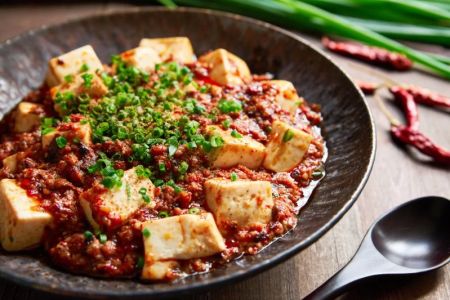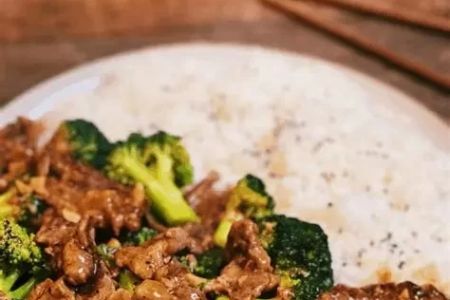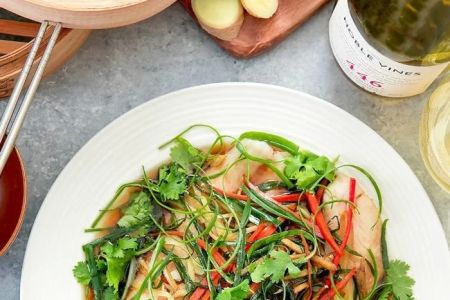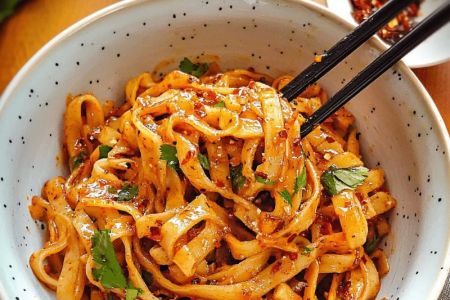- 1 - The Traditional World of Chinese Dipping Sauces
- 2 - Soy Sauce and Beyond: Exploring the Essentials
- 3 - Regional Flavors and Variations of Chinese Dipping Sauces
- 4 - The Perfect Dipping Sauces for Dumplings and More
- 5 - Real Stories of Dipping Sauce Adventures
- 6 - Tips for Making Your Own Chinese Dipping Sauces
- 7 - Where to Find Authentic Dipping Sauces and Ingredients
1. The Traditional World of Chinese Dipping Sauces
When you think of Beyond Soy Sauce: Exploring the Wide World of Chinese Dipping Sauces for Dumplings and More, soy sauce may be the first ingredient that comes to mind. But in Chinese cuisine, dipping sauces go far beyond the basic condiment. These sauces bring a perfect balance of salty, sweet, sour, and spicy flavors, complementing a wide variety of dishes from dumplings to spring rolls.
Understanding the role of dipping sauces in Chinese dining is key to appreciating their culinary significance. Traditionally, Chinese sauces are crafted from fermented ingredients like soybeans, rice, and vinegar, offering a rich, umami-filled flavor that enhances the overall meal experience.
2. Soy Sauce and Beyond: Exploring the Essentials
While soy sauce is the backbone of many Chinese dipping sauces, there’s much more to explore. Soy sauce itself comes in many varieties, from the light soy sauce used in delicate dishes to dark soy sauce, which adds depth and sweetness. These are often used as the base for many dipping sauces.
However, Chinese dipping sauces are often more complex. The addition of vinegar, garlic, ginger, sesame oil, and chili paste creates layers of flavor, and customizing the balance of these ingredients is key to creating the perfect sauce. In the next sections, we’ll dive deeper into how these elements come together to create a sauce that perfectly complements different dishes.
3. Regional Flavors and Variations of Chinese Dipping Sauces
China’s diverse culinary landscape means that dipping sauces vary greatly by region. In Sichuan, for example, dipping sauces are known for their intense spiciness and the unique flavor of Sichuan peppercorns, which deliver a numbing sensation known as “mala.” These sauces often feature chili oil, garlic, and vinegar, creating a complex and fiery experience.
Meanwhile, in Guangdong (Cantonese cuisine), dipping sauces tend to be lighter, often featuring soy sauce, vinegar, and a bit of sugar for a more delicate flavor. These sauces enhance the natural taste of dumplings, dim sum, and steamed fish without overwhelming them.
Each region’s sauces reflect local ingredients, tastes, and culinary traditions, showing the depth and diversity of Chinese cuisine.
4. The Perfect Dipping Sauces for Dumplings and More
No discussion of Chinese dipping sauces would be complete without highlighting their role in dumpling culture. Whether you’re eating jiaozi (boiled dumplings) or potstickers (fried dumplings), a well-made dipping sauce is crucial to the experience. A classic dipping sauce for dumplings often includes soy sauce, rice vinegar, and a splash of sesame oil, with a pinch of sugar and chili oil to taste.
For variety, you can add fresh garlic, minced ginger, or chopped scallions to create a more aromatic experience. The right balance of flavors enhances the dumpling’s filling, creating a harmonious combination of textures and tastes that is simply irresistible.
5. Real Stories of Dipping Sauce Adventures
Many food lovers have shared stories about their first experiences with Chinese dipping sauces. One traveler described visiting a dumpling house in Beijing where they were taught the art of mixing a dipping sauce with the perfect balance of soy sauce, vinegar, and chili oil. This experience not only deepened their appreciation for the flavors but also made them realize how every diner in China has their own unique way of customizing their sauce.
Another story from a food blogger highlighted how, after experimenting with different sauces for dumplings at home, they found that adding a dash of honey to their vinegar-based dipping sauce elevated the sweetness and brought out the flavors of the dumpling filling in a way they hadn’t expected. This personal discovery illustrates the joy of experimenting with Chinese dipping sauces to find your perfect match.
6. Tips for Making Your Own Chinese Dipping Sauces
If you’re eager to create your own dipping sauces, start by experimenting with the basic ingredients: soy sauce, rice vinegar, sesame oil, and chili paste. Once you have a base, you can get creative. Try adding garlic, ginger, or even a dash of oyster sauce for extra depth.
For a classic dipping sauce, mix 3 parts soy sauce, 1 part rice vinegar, a few drops of sesame oil, and a spoonful of chili paste. Taste as you go, adjusting the ratios to suit your preference. You can also garnish with fresh herbs like cilantro or chopped scallions for added freshness.
7. Where to Find Authentic Dipping Sauces and Ingredients
To make Beyond Soy Sauce: Exploring the Wide World of Chinese Dipping Sauces for Dumplings and More truly authentic, you need the right ingredients. At Chinese Food, you can find a wide selection of quality sauces, oils, and pastes that will help you replicate traditional flavors at home. From premium soy sauces to specialty chili oils, having access to authentic products ensures that your dipping sauces are as close to the real deal as possible.
By understanding the nuances of Chinese dipping sauces and experimenting with your own creations, you can elevate your dining experience, whether you’re hosting a meal for friends or simply enjoying a quiet dinner at home.







